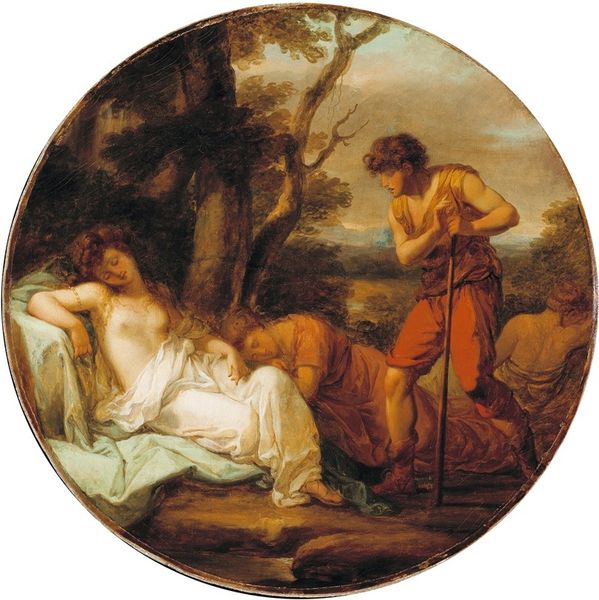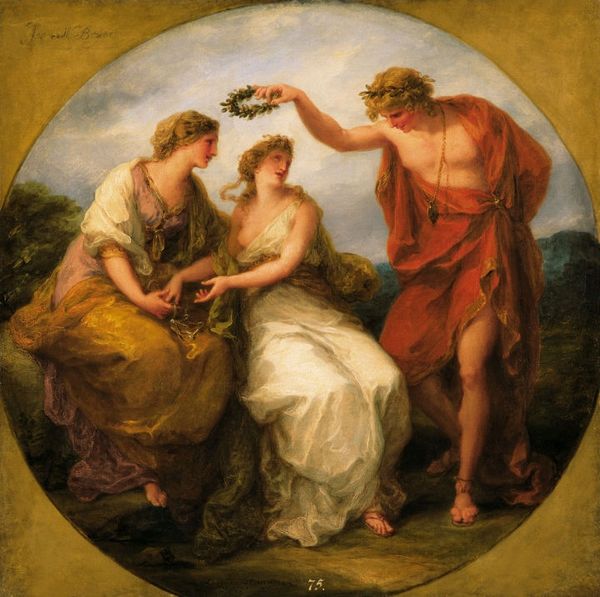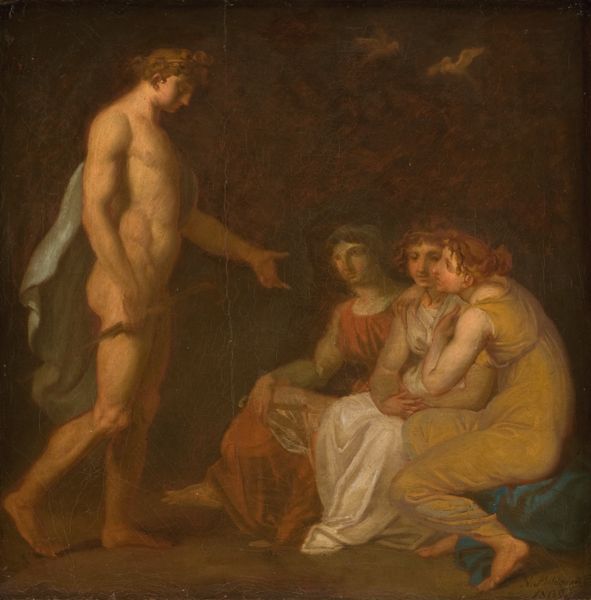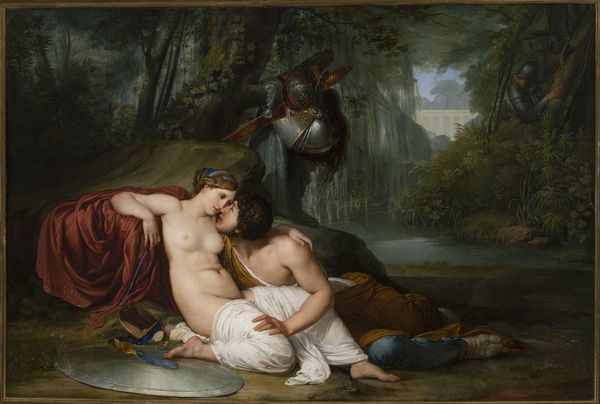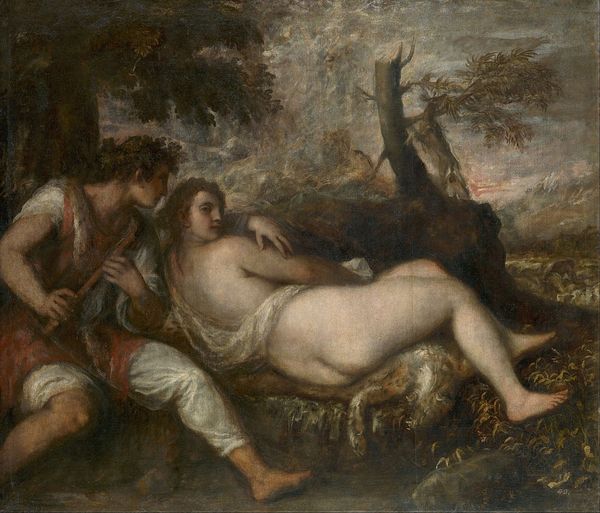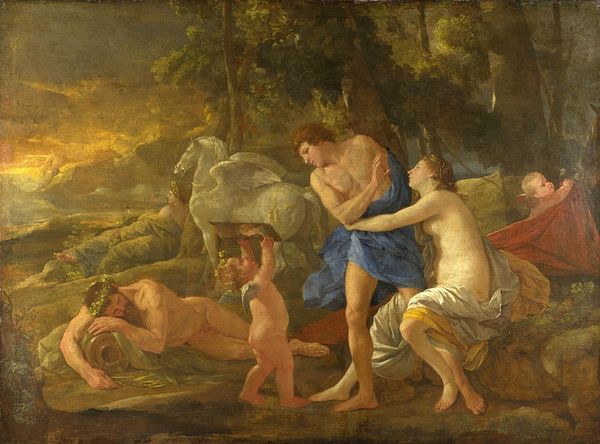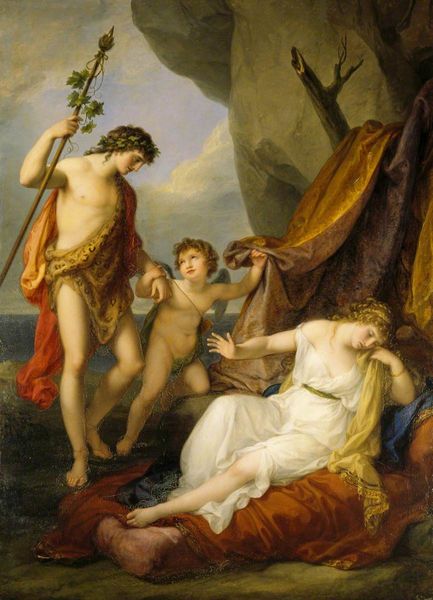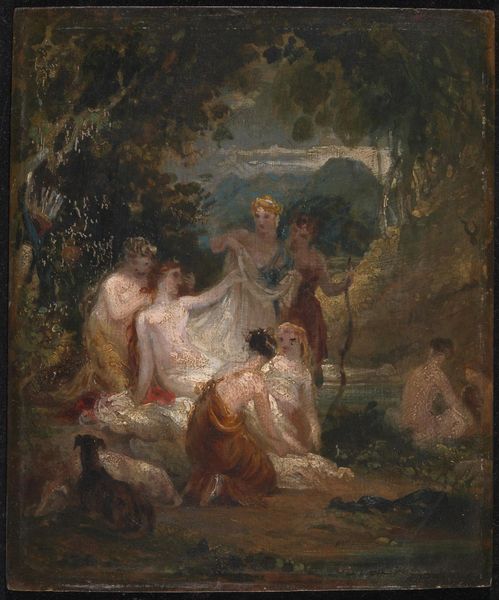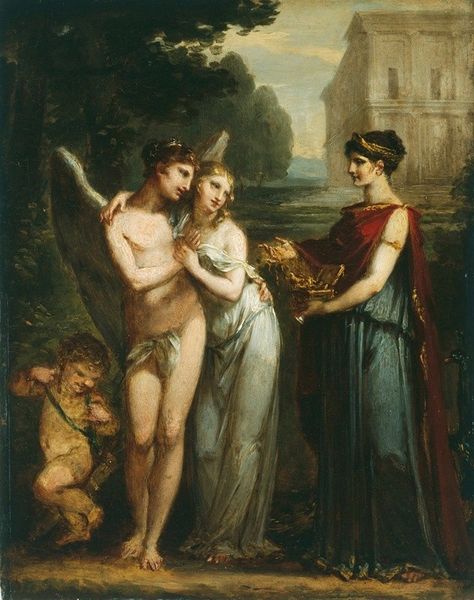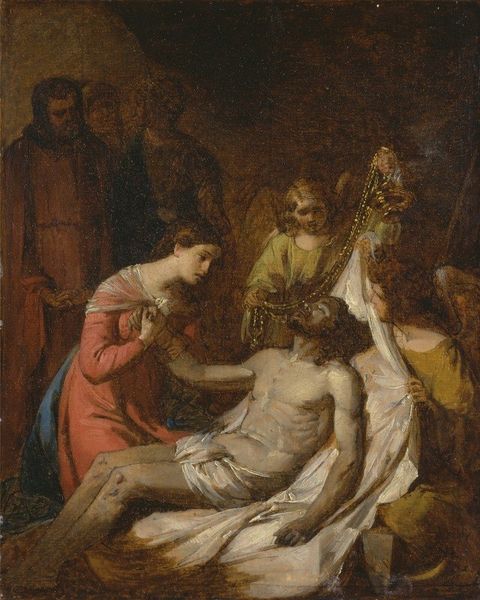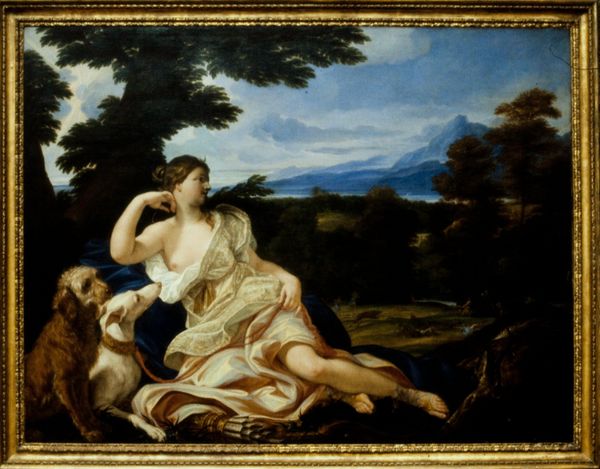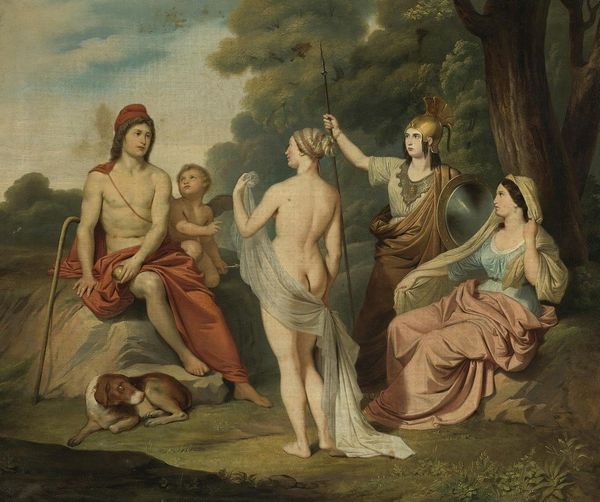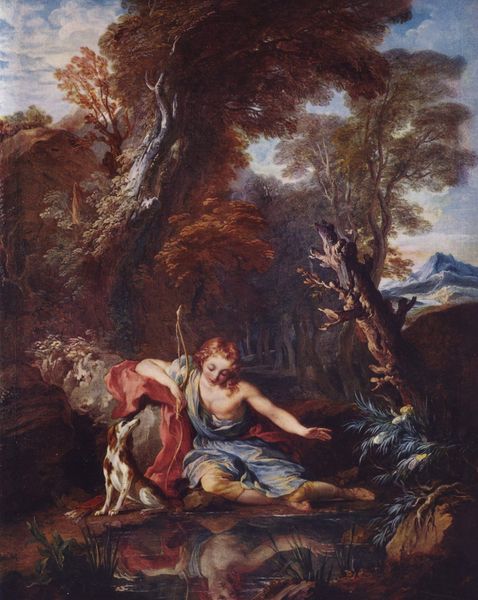
#
charcoal drawing
#
possibly oil pastel
#
oil painting
#
acrylic on canvas
#
underpainting
#
mythology
#
painting painterly
#
animal drawing portrait
#
portrait drawing
#
watercolour illustration
#
watercolor
Copyright: Public Domain: Artvee
Editor: So this is Angelica Kauffmann's "Cimon and Iphigenia," probably painted sometime in the late 18th century. It looks like an oil painting. The scene feels very staged, theatrical even. What do you see in this piece, beyond the immediate narrative? Curator: This painting, beyond its surface appeal, opens a window into the complex social dynamics of the late 18th century, especially concerning gender and class. Note how Iphigenia and her companions are passively displayed, literally reclining and vulnerable. Consider the male gaze inherent in the Cimon character—his 'discovery' of their beauty serving as the catalyst for his supposed enlightenment. It mirrors the patriarchal structures that confine women to objects of aesthetic admiration, devoid of agency. Editor: So, it's not just a mythological scene but a commentary on societal power? Curator: Precisely. Kauffmann, though successful, navigated a world that limited female artists. Examining this painting through a feminist lens exposes the power imbalances it subtly perpetuates, even while seemingly celebrating beauty. The figures are devoid of individual character, but the painting does bring to the fore the power that wealthy noblewomen had at the time and the importance of access in determining not only wealth but visibility and notoriety. Are we meant to simply passively accept their beauty? Editor: I hadn't considered that performative aspect. It makes the scene feel much more charged and critical, instead of simply beautiful. I can see the issues there. Curator: Indeed. By questioning the accepted narrative and understanding its historical context, we can unveil the painting's deeper social commentary, recognizing its relevance to ongoing dialogues about representation and power. Editor: Thanks, I now see the narrative is more complicated. There's power dynamics at play, influencing what and who is being portrayed. Curator: And that intersectional reading allows us to engage more fully with the artwork. There's always more to unpack.
Comments
No comments
Be the first to comment and join the conversation on the ultimate creative platform.
